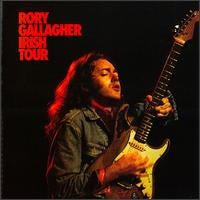The Spark and Flame of Live Performance
Several sets offer reminders about the sacred circuit of inspiration.....
Is there any meaningful way to account for the nights on stages lost to the pandemic? It boggles the mind, this kind of widespread and protracted silence. Think about the performances that artists in their prime will never give, the experiences missed. Then game that out further: What happens when whole systems of cultural communication, once so vital they could be taken for granted, are sidelined?
Maybe, if we’re lucky, we’ll look back and realize it was a great big giant Reset Button for music and live performance, leading to a corrective realignment to address the income “irregularities” of streaming and all the rest. Yes I know. Dream on.
Til then, music writers are serving up helpful lists of live albums, as reminders of the two-way inspiration circuit that happens in performance situations. Here are a few I’ve been checking this week….
JOHN LEE HOOKER: Live at Montreux 1983, 1990 (Eagle Rock).
Here’s a chance to hear the Godfather of the blues, the gruff legend of boogie, doing two animated sets, years apart, at a venue known to inspire blazing performances -- the Montreux Jazz Festival. He’s in great animated form both times, leading a polished, show-business-minded, festival-ready band through a time-tested songbook that somehow never gets old.
You can almost feel Hooker savoring the rhythmic thrust of “Boom Boom” in 1983; he talk-sings through the early verses, and when, at around 2:28, the band transitions to a zingy uptempo swing, he chuckles a little bit then slides into the higher gear like it’s no big deal. The 83 show sustains a shuttling peak groove the whole way; one highlight is an extended romp through Hooker’s “hit” “Boogie Chillen,” featuring heat-seeking cameos from guest guitarist Luther Allison and harmonica legend Sugar Blue.
RORY GALLAGHER: Irish Tour ’74 (Polydor)
Like many before and since, the underappreciated Irish blues-rock guitarist Rory Gallagher struggled to create magic in the recording studio. “If he didn’t have somebody to look at, then he couldn’t feed off the energy,” keyboardist Lou Martin, a veteran of Gallagher’s band, recalled to author Marcus Connaughton. “That’s why Irish Tour is such a good bloody album because it was recorded live, he got the crowd there with him singing along and sort of like urging him along… without the presence of an audience the recording process for Rory was a bit of a strain."
There’s no audible strain on this thundering set drawn from dates in Dublin, Cork and notably Belfast during The Troubles. What survives, instead, is a relentlessly inventive guitar improvisor who’s in pursuit of definitive-statement solos. He starts by echoing the blunt declarations of the blues, and through patient massaging of familiar (and not so) riffs, winds up delivering torrents of mind-expanding fury that erase distinctions between “blues” and “rock.” This has been reissued in several different configurations, including a 7-disc box; the original double album, which contains the memorable cover of Muddy Waters’ “I Wonder Who,” remains the essential document.
SONNY ROLLINS: Rollins in Holland (Resonance).
There are scattered missed cues. Maybe one or two momentary snafus as the songs end. They don’t matter. This just-issued account of several days tenor saxophonist Sonny Rollins spent in the Netherlands in May of 1967 is worth hearing for the glimpse it offers, of a master developing simple lines and phrases into an epic act of spontaneity in sound.
Consider the 22-minute “Three Little Words” from the concert performance (there’s also some live-in-studio playing). Playing one of the pop standards he loves, Rollins leads a hired-gun tandem (Ruud Jacobs on bass, Han Bennink on drums) through several loose variations of the theme. Then he skates through some bebop, returning every so often to a fragment of melody, taking advantage of the chordless setting to stretch the harmony. This goes for awhile, with Rollins swerving from extended liquid eighth-note lines to crisply rendered trumpet-like catcalls; there’s a separate lesson here in the nearly lost art of articulation on the saxophone. Then he begins quoting, cramming lines from Charlie Chaplin’s “Smile” and various standards (“Old Devil Moon,” “Polka Dots and Moonbeams”) up against his own “St. Thomas” and “Pent-Up House.” Rollins is improvising for most of the marathon track, and he never sounds exhausted: The synapses just keep firing.
Related current release: Right Now! The Dayna Stephens Quartet Live at the Village Vanguard (Contagious Music).
One of the year’s most inventive live sets, this showcases saxophonist Dayna Stephens performing at the New York landmark where Rollins (and John Coltrane, for that matter) made some historically significant live records. Stephens is a fluid soloist and wily composer whose tunes grow wings under sustained exploration from gifted pianist Aaron Parks, bassist Ben Street and drummer Greg Hutchinson.
Please consider subscribing (it’s free!). And…..please spread the word! (This only works via word of mouth!)
Subscribe here.
And....please (pretty please!) participate: Send along gripes, feedback, ideas, and, of course, artists and recordings you wish more people knew about! The suggestion box: echolocatormusic@gmail.com.







Couldn't agree with you more on Rory Gallagher although his Blueprint and Top Priority studio albums were just killer, rhythmically sharp hard rock. Also liked the first live album, Live in Europe from '72. Definitely Turn-It-Up music.